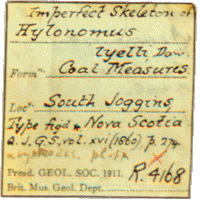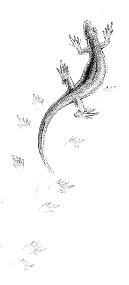
   |
|

|
Sir J. William Dawson (1820-1899) The first Canadian-born scientist of worldwide reputation was Sir John William Dawson, born in Pictou, Nova Scotia, in 1820. As a boy, he developed an incurable interest in geology and was an avid collector of local fossils. In Dawson's day, schoolboys often found fossil leaves while gathering shale to make slate pencils. Dawson recorded his discoveries and exchanged fossils with other geologists from the Pictou and Joggins areas, adding to his already overflowing collection. He attended the University of Edinburgh to study geology in 1840, but was forced to leave after only one year due to financial problems. The next few years of his life were spent working for mining companies and doing field work which was published through the Geological Society of London. When the famous geologist Charles Lyell visited coal deposits in Pictou, Dawson acted as his guide.
Dawson became principal of McGill College in Montreal in 1854, which he made into a reputable institution. He remained there, teaching geology and palaeontology and acting as librarian, until his retirement. One of his lifelong dreams was realized in 1882 when Peter Redpath gave money to McGill for the construction and establishment of a museum, naming Dawson as director. Today the Peter Redpath Museum of Natural History houses many specimens from Dawson's personal collection. Sir J. William Dawson died in 1899 in Montreal. |

 In 1851, Dawson and Lyell teamed up again to examine
the interiors of fossil tree trunks at
In 1851, Dawson and Lyell teamed up again to examine
the interiors of fossil tree trunks at ![[Nova Scotia Museum]](../graphics/nsmlogo.gif)